What’s Up with Stickers? An Ode
They have endured the test of time. The humble sticker has been around for some time...
Continue readingYour cart is currently empty!

They have endured the test of time. The humble sticker has been around for some time...
Continue readingFigure 1: Bert atop final summit Crestone Needle with All Peak stickers on ShelterBox
Every once in a while, you meet someone you are wholly impressed with and think, “that person is going to go places”. Brittney Woodrum (or Bert to her friends) is one of those people. She’s a special mix of elite athlete, modern-day adventurer and erudite defender of the less fortunate.
I discovered Bert in an article I read earlier in the year. The article described a Kentucky-native who set-out to summit all 58 of Colorado’s 14ers (peaks above 14,000 feet) in a single summer to raise awareness and money for families affected by disasters - specifically, a non-profit named ShelterBox. The charity is based in the UK and provides emergency shelter and other aid items to global families who have lost their homes to disaster or conflict.
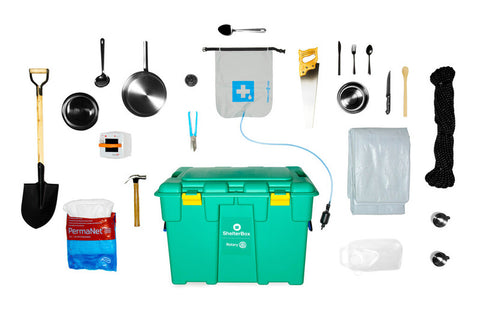
Figure 2: ShelterBox aid contents
As a ShelterBox ambassador, Bert already had a thorough understanding of the organization's mission and the growing need as a result of COVID. Therefore, when she was looking for her next big challenge, ShelterBox was a natural fit. ShelterBox ships relief items to affected areas/families in a cooler-like box colored seafoam green, like grandma’s family Jell-O. To call attention to the cause, Bert committed to strapping a box to her back for each mountain ascent.

Figure 3: ShelterBox with All Peak logo sticker atop a 14er
I caught up with Bert via phone for a little Q&A after she completed her Fourteeners Project. First a little background. At 27, Bert is currently studying for a degree in Humanitarian Assistance at the University of Denver. Prior to coming to Colorado, the Kentucky-native studied non-profit administration and Spanish and graduated from the University of Kentucky.
While most people look for a job after graduating from college, Bert’s wanderlust ignited a passion for tough physical challenges, travel, and cultural exposure. She completed the Fourteeners Project, on September 26th, 2020 by knocking off the summit of Crestone Needle. In under 80 days, Bert climbed 58 peaks, racking up 232,300 feet of elevation, 540 miles and raised approximately $85,000 for ShelterBox. Did I mention she had never climbed a 14er before she started the Fourteener Project?
Q: When were you first bitten by the wanderlust bug?
A: I have always been a student of learning. It’s been the core of my DNA. Life is no greater teacher. Growing up, my father’s job took him to lots of countries and although I never went with, he brought home exotic things. My parents were supportive of my dreams. “If you can support yourself, then we support you”, they would say. Studying a language (Spanish) was a catalyst that opened so many doors for me. I loved learning languages and in my free time I’d spend it studying a language. It’s a puzzle. Once you’ve cracked a code, you have this incredible tool to communicate with others in an intimate and unique way. This inspired me to go to new corners of the world, a desire to learn about places.
Q: How did you come to be nicknamed Bert from Brittney?
A: It’s just a quick switch of the letters from Britt to Bert. In hiking culture people love to give you nicknames. Last year I joined Habit for Humanity cycling across the country. My box had Bert on it and…it stuck.
Q: You’ve hiked the AT (Appalachian Trail), Camino de Santiago and now all the Colorado 14ers. Which trek was the hardest and why?
A: Between the AT and the Fourteeners Project, it’s hard to say. There was more effort on a daily basis for the Fourteeners Project. It was logistically harder. With the AT, all you have to do is follow the white blazes. However, I didn’t have to carry nearly as much weight. Also, the Fourteeners Project, I [was able to come back] to the car end of day - with access to more resources. The AT was in the forest for 4 1/2 months. I had a lot of mental fatigue with both trails, but especially on the AT. You get a lot of scenery change. I missed human contact [on the AT], but got to chat with friends and family online with the Fourteeners Project. I would do the Fourteeners Project again. The AT would be hard.
Q: You’re going to take some well-deserved rest. What’s next for Brittney Woodrum after that? When do you hear about the Rotary Peace Fellowship and if you were accepted?
A: Yeah [laughing], I’m tired. I will find out in about a month [about the Fellowship], early to mid-November. My goal is to be of service in the world to people who have lost something at no fault of their own. I spent a lot of time in Myanmar. The people I met there were special to me. I would like to focus a lot on that part of the world. I’m currently getting my Certification of Humanitarian Assistance from the University of Denver. I like to fix problems at the root. The Fellowship is very competitive. If I do get it, it would start 2022.
We wish her luck! Bert’s new home for the moment is Leadville, Colorado. She fell in love the area during her trek through the 14ers. Leadville will be a basecamp to save up, rest, plan her next project, and be in the mountains in a different season.
Her next project may include the CDT (Continental Divide Trail), the tallest 100 mountains or the White Mountain 4k’s. She’s confident she’ll do more summits and likely see that seafoam green ShelterBox again.

Figure 4: Bert atop Castle Peak
Continue readingArguably one of the most popular and well-trekked Colorado 14ers, Mount Bierstadt is visited by over 40,000 people a year. It is easily accessible from Denver and has a beautiful approach. It is also one of our favorite designs. For avid 14er fans, this design is both playful and memorable.
For the design, we wanted to give it a beer label feel. In a state that ranks 2nd behind California with the number of breweries, beer is serious stuff! It should come as no surprise then, that the first thing people think of when they hear the name Bierstadt, is beer!
Bierstadt translates to “Beer City” in German. Interestingly, the peak’s namesake has nothing to do with this sudsy libation. Rather, the peak is named for a famous American landscape painter Albert Bierstadt. He visited Mount Evans in 1863 and, it is thought, climbed a nearby peak (possibly Bierstadt). The mountain was officially named after him in 1914.

Regardless, the beer theme is what we were going for in our design. You could slap our sticker on a beer bottle, stein, can or growler of your choice and it would look like it belonged there. The size and shape are reminiscent of Old-World beer brands. The round scalloped edges should remind you of a bottle cap. The large keg in the center confirms the theme and the umlaut over the stylized Bavarian letters add to the authenticity.
Finally, there’s a nod to a feature found at the beginning of the trail – the willows. Two willow branches hug the keg design from both sides. The willows are a prominent and unique part of the Bierstadt trail. The common route at Guanella Pass starts above treeline and takes you through the largest willow bog in Colorado.
Anyone that has hiked the trail before 2011 can recall the arduous trek through the dreaded willows. Hikers would get “bogged-down” in the mud, scratched-up, and often end up trailblazing new routes. The construction of a raised wooden boardwalk eliminated these problems and helps preserve the willows from being trampled.
We hope you enjoy your Mount Bierstadt design responsibly!
Side Note: A shout-out to our All Peak Designer Amanda Hamilton, who created the Bierstadt design. Amanda’s originality and artistic aptitude have their fingerprints throughout our catalog.
Sources:
Colorado Fourteeners Initiative https://www.14ers.org/2018-colorado-14er-hiking-use-estimates/
Armchair Mountaineer https://armchairmountaineer.com/mt-bierstadt
Continue reading
Scavenger Hunt Bingo for hiking Colorado 14ers
Continue readingEveryone has gone through pain after a long hike or an endurance activity. The way our bodies feel after an adventurous activity can set standardsfor how we need to treat it before and after we participate in these endeavors. Consider how your body feels. Yoga and meditation can help you in preparation for a big day of hiking.
Taking the time to become more mindful of our bodies before hiking will be critical to how we feel afterwards. Below, I have comprised some basic poses and meditations that really help to make space within our bodies and minds before strenuous activities.
5 Poses for Success:

Givenchy Jones Photography

Givenchy Jones Photography
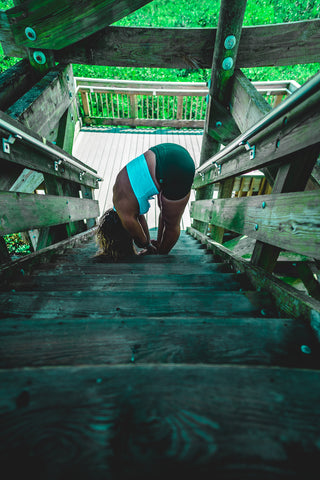
Givenchy Jones Photography

Givenchy Jones Photography

Givenchy Jones Photography
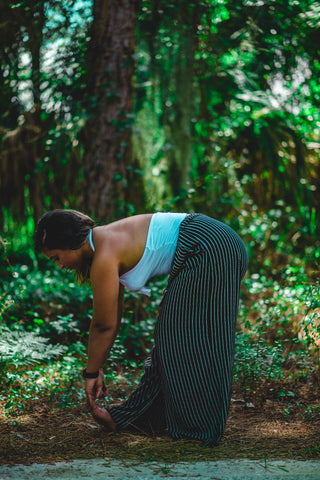
Givenchy Jones Photography
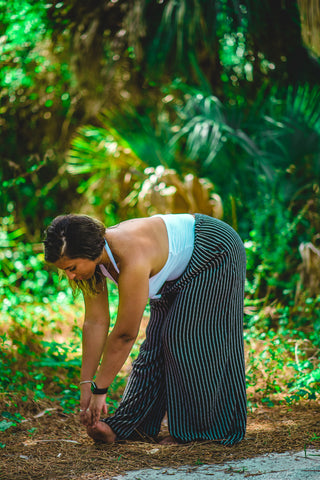
Givenchy Jones Photography
Considerations: Hold the poses for as long as needed for your body individually. Use the ground or whatever is around you for support if needed. There is no “set” place you should feel a stretch, you feel it where your body needs it. Have fun with this—you’re taking the time to prepare for a great hike!

Givenchy Jones Photography
Meditation:
Take 5 minutes before your hike to think about the reason why you are there that day. Listen to the sounds around you and become immersed in your position within the world.
___________________________________________________________________________
It is important to take time for ourselves before strenuous activities. Yoga helps us to find our balance to ensure our bodies are ready for the journey ahead. Building these tools (yoga poses and meditation) into our schedule can be fundamental to our success. Try a little love for your body before a hike and see how you feel afterwards!
Namaste | Alexis
Alexis is the Founder of Aesthetic Chaos, a blog that focuses on adventure and well-being. Alexis is currently obtaining her 200-yoga teacher training certification at St. Pete Yoga, a Yoga Alliance registered yoga school. You can visit her website at aestheticchaos.net.
Photos by Givenchy Jones Photography
Continue readingThere are many ways to celebrate the New Year around the world. And…there are a surprising number of similarities – family and friends, good food, fireworks, reflection, etc.
In East Asia, many celebrate hope and renewal by watching the sunrise on New Year’s Day. This is typically done in large groups on mountaintops, beaches or scenic valleys.
In Japan (and other mountainous countries of East Asia), large groups will endure the bitter cold to summit a mountain and greet the rising sun. It is called Hatsuhinode, and is Japanese for the welcoming of the first sunrise of the New Year.
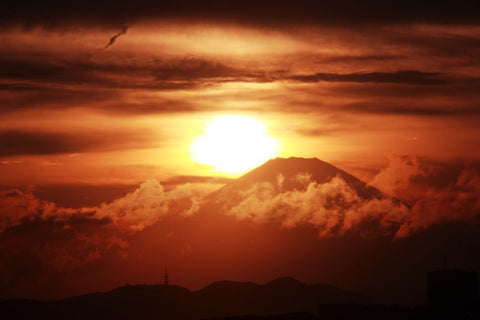
A group around Colorado Springs in southwest Colorado has a similar practice of enduring the cold to hike to the top of a mountain. The group is called the AdAmAn Club (http://adaman.org). Rather than watch the sunrise, the group’s purpose is to light fireworks at the summit at midnight.
The AdAmAn Club was formed in 1923 after a group of 5 men dubbed “The Frozen Five” decided to hike to the top of Pikes Peak to set off fireworks on New Year’s Eve. The five men were Fred and Ed Morath, Fred Barr, Willis Magee and Harry Standley.
So it was, that on December 31st, 1922, the Frozen Five created “fire on the mountaintop” that could be seen for miles around and created quite a stir. Two of the original five, brothers Fred and Ed Morath suggested the name “AdAmAn” for a rule that only one new member could be added each year. The tradition has lasted for over 90 years and the club gets bigger.
Pikes Peak is “America’s Mountain”, one of the 53 Colorado 14ers (peaks above 14,000 feet) and tallest of the southern Front Range at 14,115 feet. Pikes is named from explorer/adventurer Zebulon Pike, who interestingly enough, did not summit the peak. (Side note: This author thinks Zebulon is such a cool name, that if he had another son, he’d seriously consider naming him Zebulon.)
The summit is accessible by a cog railway, a paved road and Barr hiking trail. Pikes Peak is only one of two 14ers accessible by paved road. The other is Mount Evans.
Pikes Peak earns the moniker “America’s Mountain” from its’ sheer popularity - hosting tourists, climbers, researchers and racing fans. The Pikes Peak road is famous for the International Pikes Peak Hill Climb motor race, USA Cycling Hill Climb National Championships and Pikes Peak Cycling Hill Climb.
The icy Barr Trail is the eastern route the AdAmAn Club takes to reach the top and is accessible to the public for climbing most of the year. Fireworks in the splendor that is America’s Mountain celebrates the majesty of our great country and gives fitting backdrop to occasion. Happy New Year!
Continue readingThe recent eruptions in Hawaii with Mount Kilauea have a lot of people thinking about volcanoes lately and for good reason. Over 2,000 people are being evacuated in Hawaii and scientists are wondering if the rumblings under foot could be grander in scope.
Kilauea sits in the midst of the Ring of Fire, a horseshoe-shaped belt of volcanic activity that stretches over 25,000 miles in the Pacific basin. [i]Roughly 450 volcanoes are in the Ring of Fire comprising of 75% of the world’s active and dormant volcanoes.
If the Hawaii activity were a symptom of a systemic issue, folks in the Pacific Northwest are worried. There are 13 volcanoes on the West Coast including Mounts Rainier and Hood. We only have to look back to 1980 when Mount ST Helens tragically blew, killing dozens and spreading ash across much of the United States. [ii]
So far, that fear is allayed, as scientists have not detected any abnormal readings of increased volcanic activity on the West Coast. This gives any hiker pause when climbing a mountain that might be active. It’s like climbing a rickety ladder - you just don’t feel safe.
Many of the mountains we climb are in fact volcanic in origin. Of the 7 Summits, two are volcanic – Kilimanjaro (19,341’) in Africa and Elbrus (18,510’) in Russia.
 (Kilimanjaro – Trekkinghero.com)
(Kilimanjaro – Trekkinghero.com)
Volcanoes fall into one of three statuses: Active, dormant and extinct. The later not having activity for over 10,000 years, so that’s comforting.
Now that you know about volcanic mountains, what are the other types of mountains? Not all mountains are created the equal. Each mountain and range has a different story. Pressure, type of strata (rock), erosion, volcanic forces all play a role. In addition to volcanic mountains, there are four other types: fold, fault-block, plateau and dome.
Fold mountains are the most common. They are caused when tectonic plates crash into each other. Huge amounts of pressure and friction create these huge monuments of our planet. They are the largest in size and form long ranges. The best examples are the Rocky Mountains and the Himalayas.

(Rocky Mountains – WikiTravel.org)
Fault-block mountains are formed where a fault or crack pushes up rocks. On one side of the fault, the earth drops down sharply. On this side of the mountain, the sides are often sheer drops – fun for rock climbers. The Sierra Nevada range is a prime example.

(Sierra Nevadas – Phys.org)
Plateau mountains and dome mountains form with the help of mother nature (mainly rain) and billions of years of erosion. Plateau mountains are formed usually near fault-block mountains and have a flat top. The Catskills of New York and mountains in New Zealand are plateau mountains.

(Matiri Range, New Zealand – Teara.govt.nz)
Dome mountains like plateau mountains are formed by magma pushing up. However unlike plateau mountains, the magma dome is what is seen, not the rock above it as in a plateau. Over billions of years, erosion wears away around the base of the dome. The Adirondacks of New York are dome mountains. [iii]

(Algonquin Peak, Adirondacks – Peakbagger.com)
Although most mountains that are in danger of exploding anytime soon will have clearly posted warnings, it’s good to know the differences on how one mountain was formed versus the next one. It gives you a better appreciation when you are standing on top.
Sources:
[i]https://en.wikipedia.org/wiki/Ring_of_Fire
[ii]http://epaper.dallasnews.com/infinity/article_popover_share.aspx?guid=2e7a5d6a-6668-47ad-b6dd-99f65ad03854
[iii]https://www.universetoday.com/29771/types-of-mountains/
Continue readingYou just go sideways with them.
The original plan of action was to conquer three summits. We ended up conquering one- and having to stay low at our campground because storm clouds engulfed the top of one of our choices, and the campground shook with thunder.
We set up camp at Aster Lake Campground in Kananaskis Country, and watched as the storm rolled in. Mixed rain and snow and even some light hail was falling. From the lake, we caught a glimpse of our objective, smothered in clouds. It didn’t take us long to shrug, grin, and set up a nice spot by the lake to make tea and sketch pictures of mountains. The disappointment at not being able to do the two summits we intended to did not last. After all, we were out in the wilderness- at least a 5 hour hike away from anything as civilized as a parking lot- and we were happy.
It’s all the little things that matter when peak bagging- or for that matter, failing to bag peaks. Not to sound cliche, but it really is about the journey. It’s about the smell of the woods after it pours, or the smell of a match to light your propane stove. The taste of peppermint tea next to a stormy lake, and the thrill of a piece of chocolate after a long hike. This is why people come to the mountains. This is why people love being outside so much. You remember the little things that you take for granted, and you bask in the raw happiness, the stark simplicity.
The next day, the storm had cleared, but smoke from the nearby wildfires had started to drift in. Nevertheless, we were able to do the third summit we set out to do. The ridge on the summit to Mt. Sarrail was long and pleasantly challenging. The top was in sight the whole time, and we pushed to the top slowly, enjoying breaks to admire the views. We were grateful for the opportunity to push our bodies to the limits, and to enjoy the freedom that comes with being high in the mountains.
When plans go sideways, you just have to turn yourself 90 degrees, and go with the flow. Take the opportunities that come to you. Discard the plans that don’t work out. Soak up the sunrises, the storms, the summits, and the victories. Enjoy the journey and forget about the numbers. This is what it’s all about.

A ridge on Mt. Sarrail; a peak in Peter Lougheed Provincial Park, Kananaskis Country. (Alberta, Canada).
Kate Hurley is the content creator at Prone to Wandering, a blog about living an outdoor adventure lifestyle. She lives in the heart of the Rocky Mountains in Alberta. You can check out more of her posts at www.pronetowandering.com. Continue readingSummer is the preferred time for hiking for the majority of hikers, not only because of the sun and warmth, but also because the daylight hours are longer. The summer season is usually vacation time and hikers can spend more time hiking and exploring old and new trails for longer. But when the temperatures start rising into the triple digits, most people prefer to stay at home safe and away from the scorching heat. There are ways though that you can continue enjoying hiking even when the temperatures are so high that you feel like crawling into your freezer instead.
Here are 8 basic rules for hiking in the summer, which if you follow closely will allow you to actually enjoy and survive hiking even in the hottest days of the year:
Continue readingIn a recent TED Talk, Anthropologist Amber Case talks about how technology is evolving us. She shares her concern about the psychological effects of the ambivalent relationship we have with our digital devices. “What I’m really worried about is that people aren’t taking time for mental reflection anymore.” Says Case.
So true. I witness many of my friends and colleagues rush through life and lose perspective of what’s important to them. It’s easy to lose sight of what matters most to us. Moreover, our needs, goals and desires change over time. That’s exactly why I urge you to unplug and “take a hike!”
Continue reading